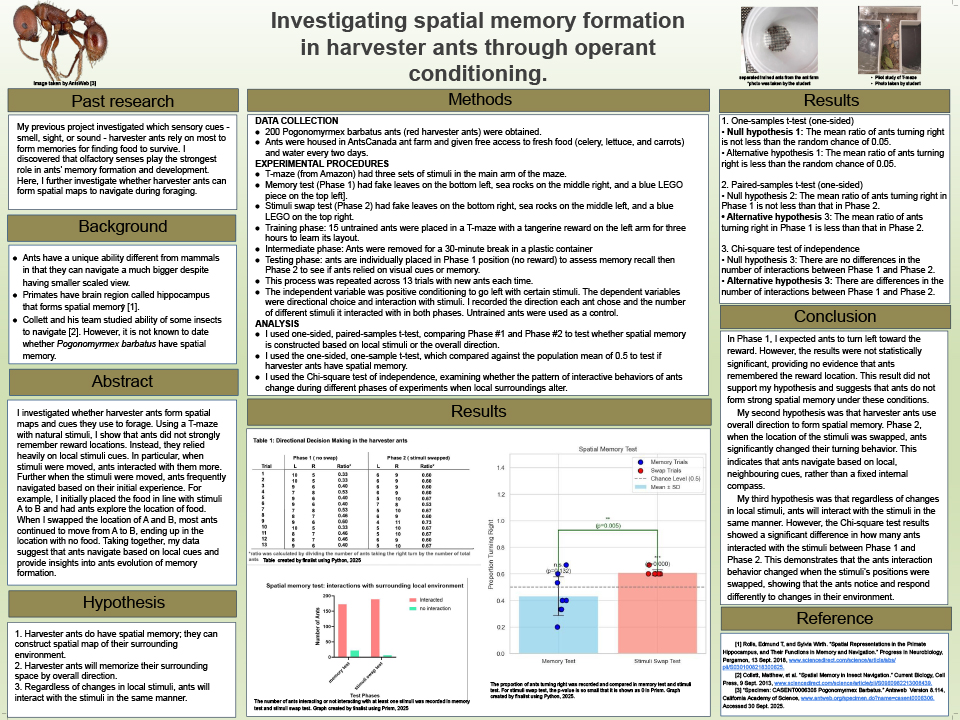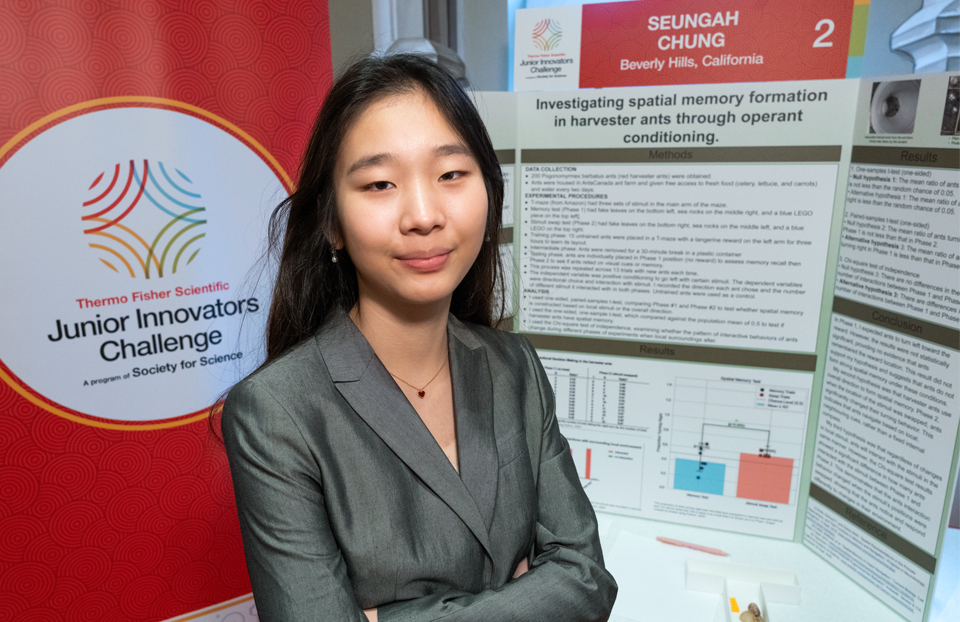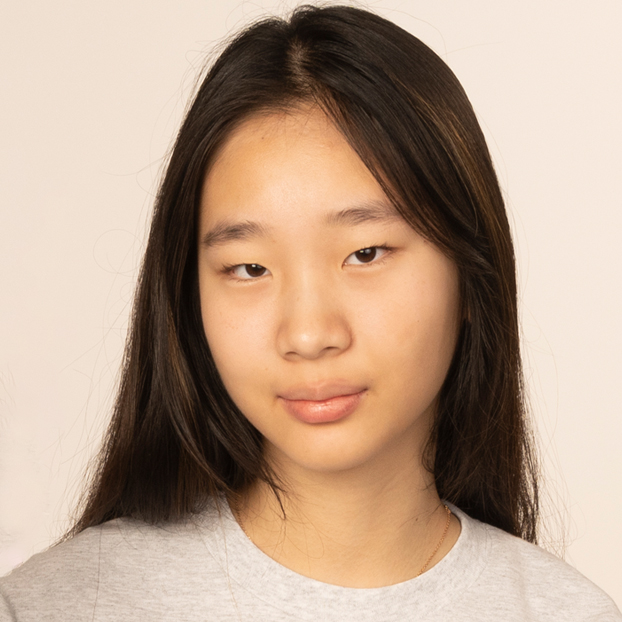Seungah Chung
8th Grade, Beverly Vista Middle School
Beverly Hills, CA
Investigating Spatial Memory Formation in Harvester Ants Through Operant Conditioning
View Poster
Project Background
For something so tiny, ants have incredible memories. They explore new environments and bring back food, laying chemical trails to lead others in their nest to a feast. “What fascinates me is how they manage to do this with such small brains, while mammals rely on much larger, more complex systems,” Seungah says. Her previous project had explored whether ants could build maps of their environments when they hunted for food, and this time, she wanted to find out what kind of cues the insects use to give them directions.
Tactics and Results
Seungah used 200 red harvester ants (Pogonomyrmex barbatus) in an ant farm. She tested 15 ants at a time in a small maze. The maze was shaped like a T and offered a delicious tangerine reward at the end of the left arm. When the ants started at the bottom of the T, they navigated around fake leaves, sea rocks and building blocks to eventually find their tasty treat. Seungah gave them time to learn the maze and then tested them one at a time 30 minutes later. The ants did not remember where the reward was very well. But when Seungah reversed the placement of the leaves, rocks and building blocks, the ants got more confused, turning right when they should turn left. She concluded that the ants were navigating based on landmarks rather than general direction.

Beyond the Project
Seungah is an artist, and joined a group called Ariari21, which uses art in community service. She helps to paint murals in homeless shelters and senior living centers to create welcoming and warm spaces. Seungah would like to become a microbiologist, and her role model is Katalin Karikó, who won the 2023 Nobel Prize in Physiology or Medicine for her work on mRNA. “I constantly imagine new infections in my head, looking for new ways to fight bacteria once antibiotics resistance takes over,” Seungah says.
